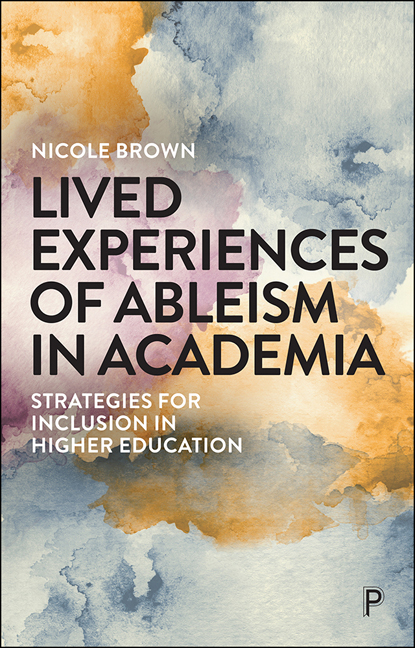15 - Teaching with and supporting teachers with dyslexia in higher education
Published online by Cambridge University Press: 18 December 2021
Summary
Introduction
Dyslexia is the specific learning disability that is most often disclosed by students at university. First descriptions of difficulties with reading and writing date back to the mid to late 19th century, with the term ‘dyslexia’ being first introduced in 1862 (Soler, 2009). At the time, symptoms like difficulties with reading and word blindness were connected to medical conditions like brain lesions or aphasia. In the late 1890s and early 1900s the ophthalmologist and eye surgeon John Hinshelwood recognised a hereditary link, as well as a higher prevalence among boys than girls, and he attributed the difficulties with reading to a deficit in individuals’ ‘visual word-centre’ (Miles and Miles, 1999: 5). In the subsequent decades, dyslexia research and recognition developed only slowly as environmental, biological and genetic dimensions were considered alongside psychological factors and childhood development (Soler, 2009; Richardson, 1992). The understanding that dyslexia is related to more linguistic and phonological differences emerged from the 1970s onwards (Guardiola, 2001). Since the early 2000s, the most commonly accepted definition is that:
Dyslexia is a specific learning disability that is neurobiological in origin. It is characterized by difficulties with accurate and/or fluent word recognition and by poor spelling and decoding abilities. These difficulties typically result from a deficit in the phonological component of language that is often unexpected in relation to other cognitive abilities and the provision of effective classroom instruction. Secondary consequences may include problems in reading comprehension and reduced reading experience that can impede growth of vocabulary and background knowledge. (Lyon et al, 2003)
Despite this seemingly uniform definition, dyslexia varies from person to person, with no individual exhibiting the same combination of strengths and weaknesses. However, many people with dyslexia exhibit strong visual, creative and problem-solving skills, which may be an asset to a teacher within higher education (Griffiths, 2012), but often cause problems relating to the processing and remembering of information (Riddick, 1995).
Our perspective
This chapter takes an autoethnographic approach (Bochner and Ellis, 2016) and combines the personal perspective from Jennifer H of being an academic with teaching responsibilities in higher education with dyslexia, with that of Jennifer L who works within educational development and who has experience of parenting and supporting someone with dyslexia.
- Type
- Chapter
- Information
- Lived Experiences of Ableism in AcademiaStrategies for Inclusion in Higher Education, pp. 249 - 264Publisher: Bristol University PressPrint publication year: 2021



